Philips OLED 937 review: sound and vision extravaganza
With its built-in Bowers & Wilkins soundsystem, the Philips OLED 937 not only looks incredible, it sounds remarkable too

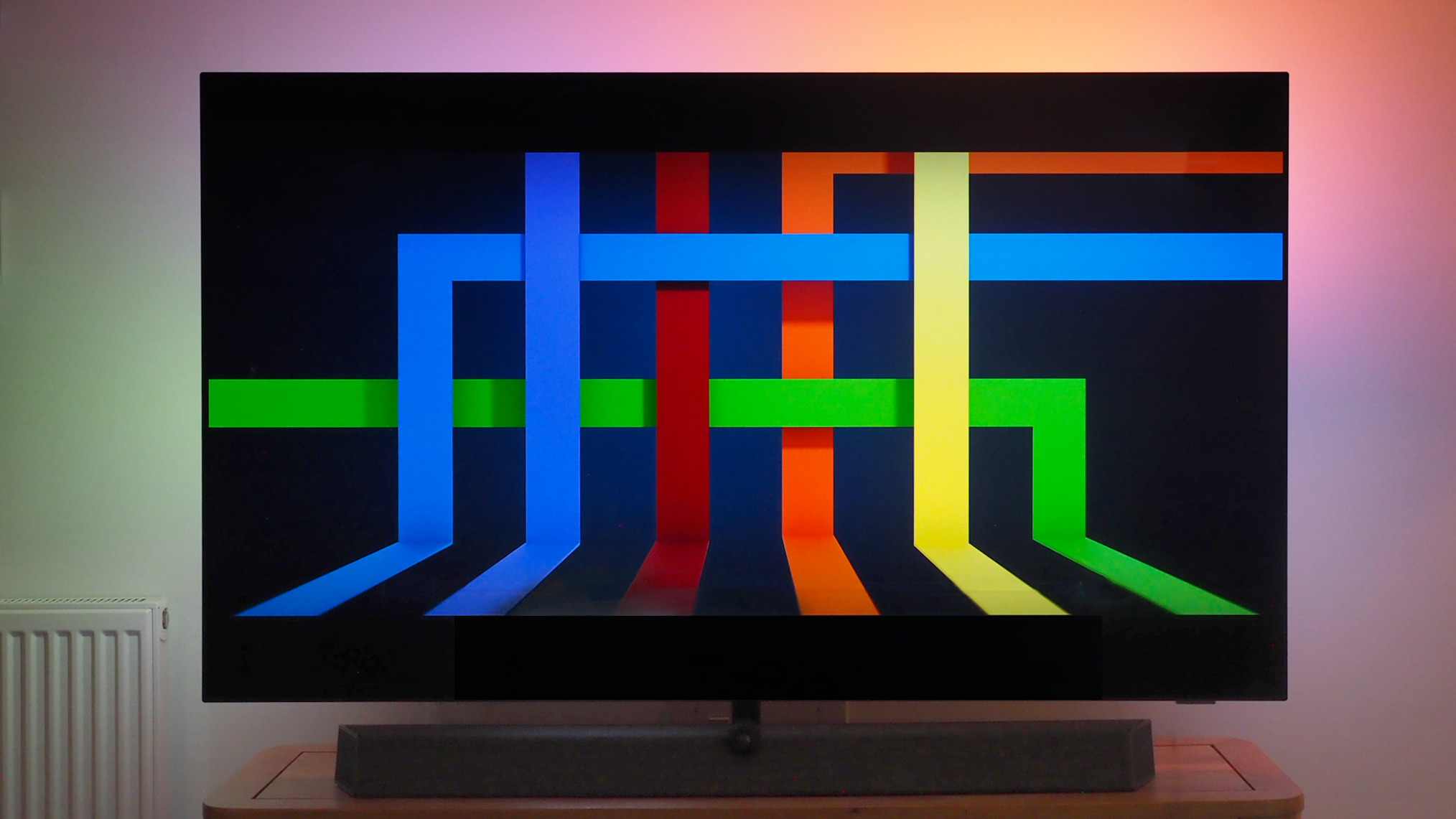
If you're in the market for a large-screen OLED TV that's a sound and vision extravaganza then the Philips OLED 937 is an absolute stormer. The added bonus of Ambilight to further immersion by projecting onto surrounding walls sweetens the deal. Sure, it's expensive, and not everyone will want an integrated sound setup like this, but if that's the case there are plenty of other 'normal' OLED TVs to suit. The OLED 937 is anything but normal, which is exactly why it's so appealing.
-
+
Stunning picture quality and superb sound in one package
-
+
Two of the four HDMI ports are 4K/120fps capable
-
+
Ambilight is always a treat, not a gimmick
-
-
Not all HDMI ports are 2.1 standard (for 4K/120fps)
-
-
Average input lag for pro gamers
-
-
A bit pricey overall
Why you can trust T3
If you've had your eyes on bagging one of the best OLED TVs then Philips' range surely has to come to mind. In the midst of a strong line-up from the competition (QD-OLED is now a thing partly being why), the brand's OLED 937 model went on sale back in 2022. It's a large-scale screen with integrated Bowers & Wilkins sound system, a kind of all-in-one home cinema experience that many cinema-lovers would dream of having in their living room.
In typical style, the Philips OLED 937 comes with full Ambilight on board. That's the name given to the system that can project light onto surrounding surfaces in real-time, which makes the already superb picture take on an even more immersive and all-encompassing sensibility. You can tweak it, set it to do different things at different paces, or switch it off as and when you wish.
As ever, however, the best TVs of today don't come with a small asking price, and the Philips OLED 937, in either of its two panel sizes, does cost a fair chunk. But is it worth considering, given its full integration of top-tier OLED panel tech and Bowers & Wilkins sound? I'll make no secret of it up front: yes, Philips is on to a sound and vision cinema extravaganza right here...
Philips OLED 937: Price & Availability
As I say, the Philips OLED 937 was released back in mid-to-late 2022, and while an 'OLED 938' is entirely plausible for 2023, I doubt you'll be able to get hold of one of those currently imaginary tellies until towards the end of the year. If that makes the 937 suddenly 'old' at that moment, however, then it may also become cheaper – if you're feeling patient enough to wait for the best Black Friday sales anyway.
Unlike Philips' not-integrated-soundsystem-TVs, such as the also-brilliant OLED 907 (basically the same telly as the 937, minus the full-on Bowers & Wilkins), the OLED 937 comes in two large sizes only: 65-inch (as reviewed) and 77-inch (as I'd love to own). The former costs £3,199 in the UK, the latter £4,799. You won't find these sets in the USA or Australia, but they do sell in Europe for around €3,499 and €4,799 respectively.
Fortunately those rather whopping price tags have come down since initial launch. As you can see from the shopping widget embedded below, the OLED 937 in 65-inch form is under £3K at the time of writing, which considering you needn't buy one of 2025's best soundbars to go with it, brings it from the realms of are-you-kidding? to on the cusp of acceptable.
Philips 65OLED937 review: Features & What's New?

So why would you buy a Philips OLED 937 if you could source an OLED 936 for less money, for example? There are a few good reasons, which I'll get into below.
First thing's first, though, the older OLED 936 is actually available in 48- and 55-inch models, which you might find more appealing overall if you're limited on space. The newer OLED 937 is only available from 65-inch, so it's go big or go, well, somewhere else.
Principal to the OLED 937's improvements is the type of OLED panel in use here. It's LG's 'EX' type, which is shorthand for saying it's capable of being a lot brighter than that very maker's last-gen panels. As such the new TV can achieve up to 30 per cent greater brightness peaks. That means punchier pictures, more eye-catching high dynamic range (HDR), plus it puts it on a level stage with its competition from, well, LG (the OLED C2 is remarkably good value if you don't want a soundsystem-integrated telly).
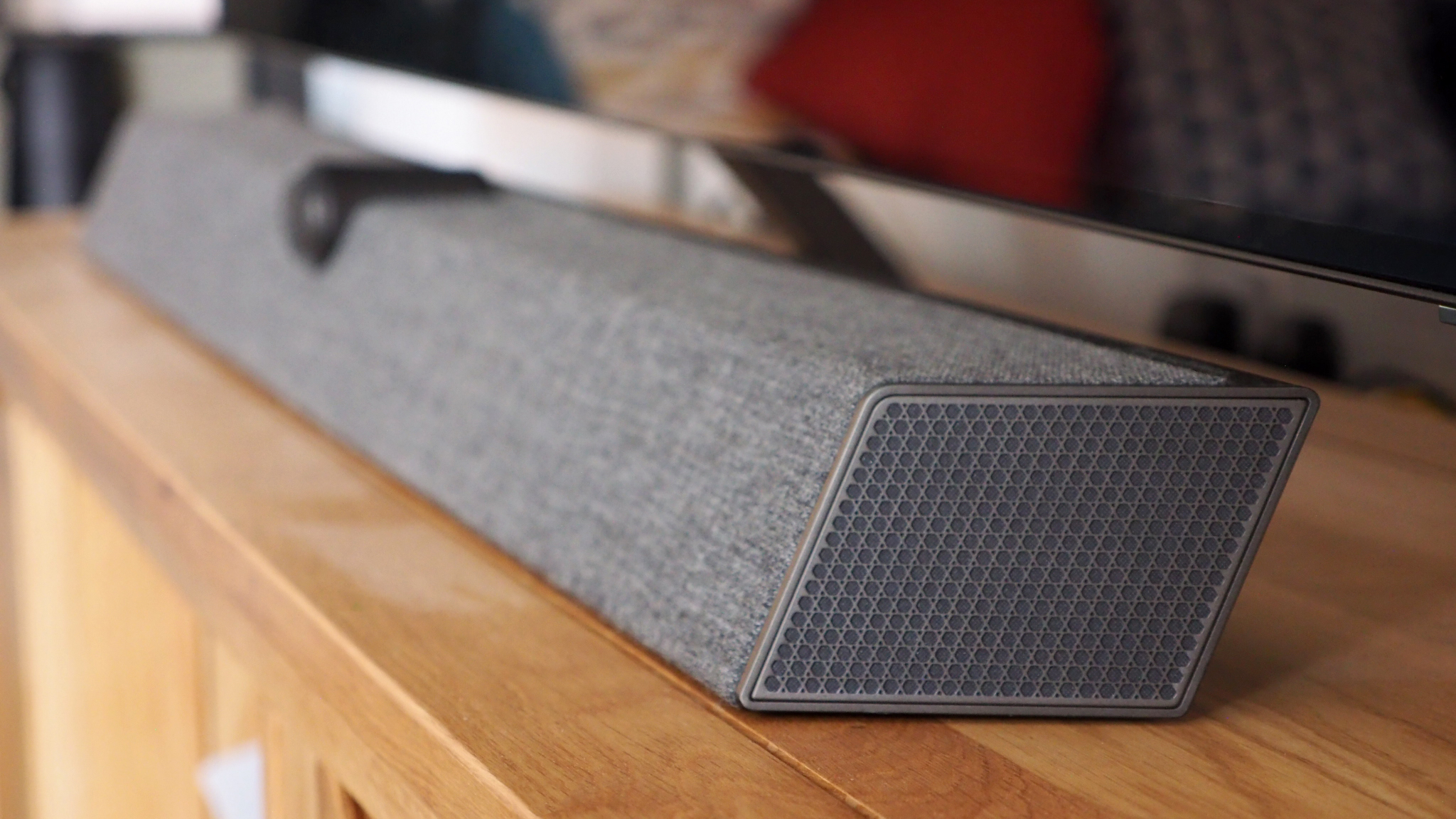
The second most important takeaway is the improvement from Bowers & Wilkins. That integrated soundbar-lookalike soundsystem is a 5.1.2 channel arrangement, up from a 3.1.2 setup in the earlier 936 model. No, there's no additional upfiring channels here, it's all about the front stage and outwards projection for a more immersive and better-positioned soundstage.
That Bowers & Wilkins system is an all-new design too, now fabric covered across its majority, helping to mitigate reflections from more metallic finishes. There's still the metal tweeter top and centre, while the side-firing speakers are positioned to avoid pushing sound 'backwards' towards the wall, as was the reverse shape of the older system on the earlier 936 model. The OLED 937 features more amplification too, with 95W total output being some 35 per cent greater than the earlier model.
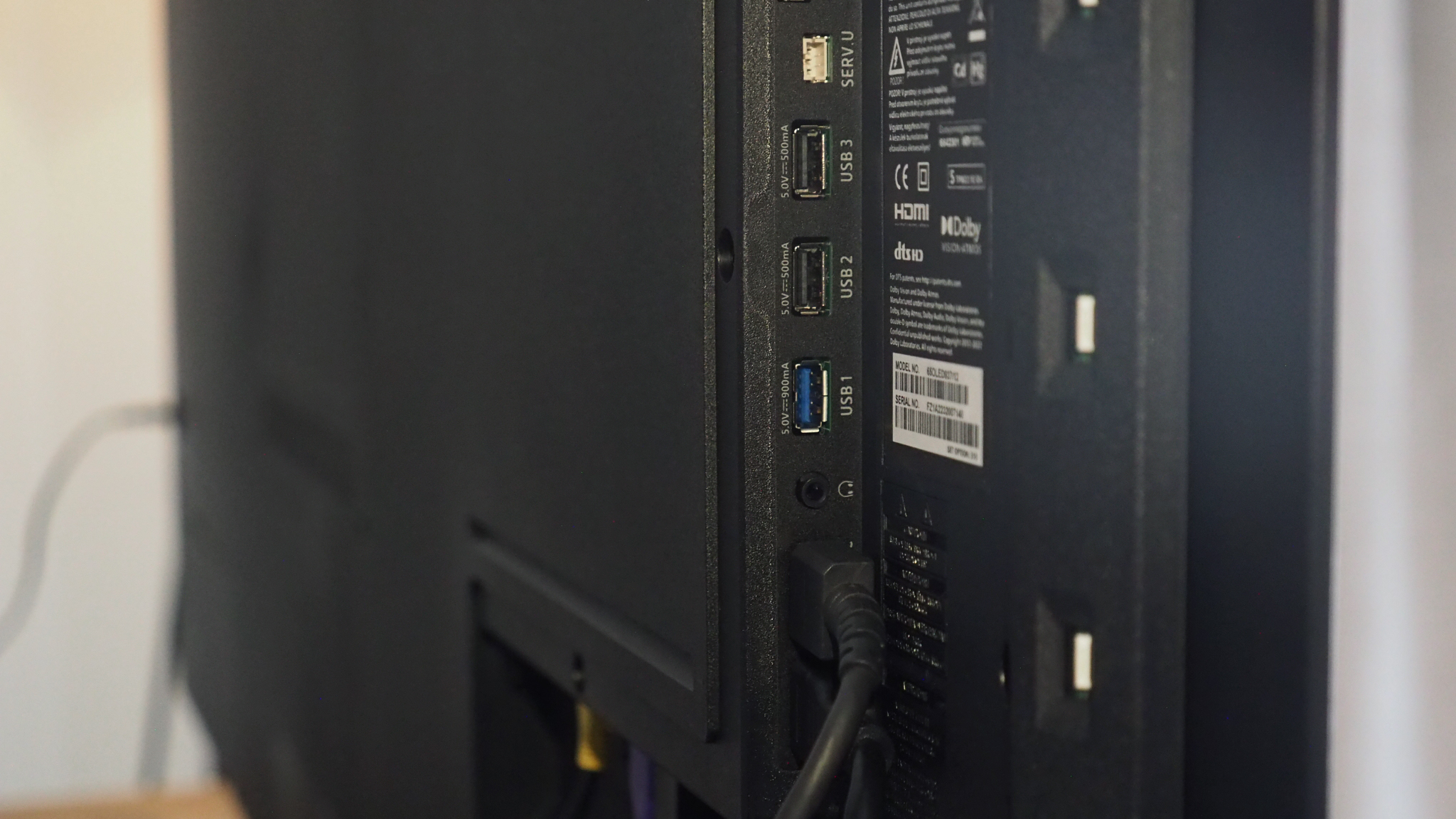
As other headline features go, the Philips OLED 937 features four HDMI sockets, two of which are the HDMI 2.1 standard. That's important because there's support for 4K resolution at 120fps for content that may require it, such as the latest games consoles. It's a shame that not all four HDMI ports are 2.1 standard, but this is fairly typical of most manufacturers these days. It would help to future-proof though.
There's an included remote with lots of direct control buttons to navigate through your favourites, with Android TV 11 (and upgrade on 10) being the primary operating system. You'll certainly need the remote as Philips, as ever, has bundles of menus to navigate through, if you so wish, when tinkering picture quality to your preference.
Philips 65OLED937 review: Picture Quality
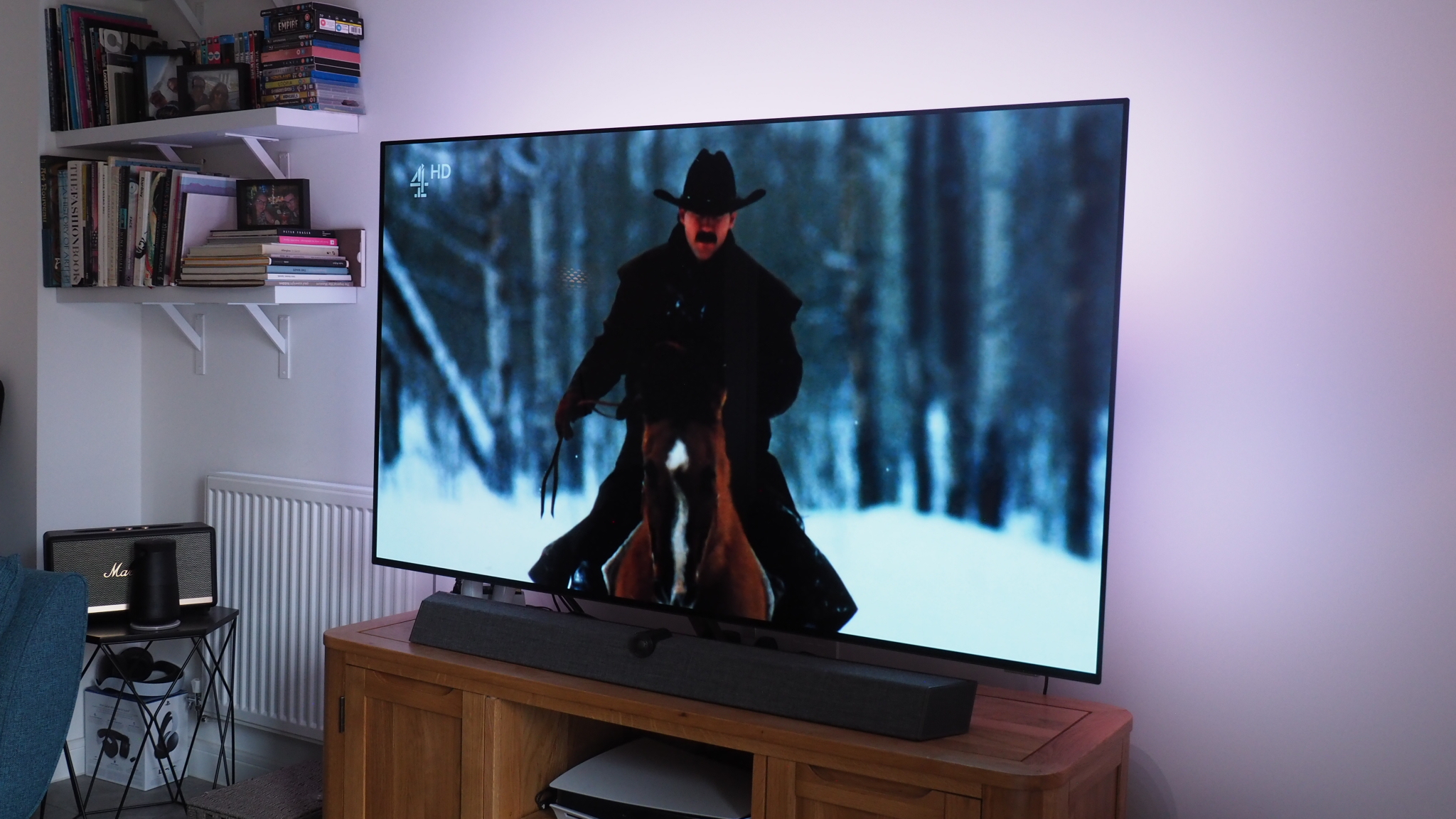
Speaking of picture quality: the Philips OLED 937 never fails to deliver those wow moments with genuine wow factor. I first saw this TV setup at Bowers & Wilkins' headquarters in the south of England, where its soundsystem blew me away. Having it set up in my own living room for many weeks, however, hasn't taken that sheen off the experience. It still looks and sounds superb.
Much like its OLED 907 cousin's picture quality potential, the OLED 937 is an impressive and capable TV, in every respect and in every circumstance. I've been gaming via PlayStation 5, watching 4K Blu-rays, streaming from BT TV, and catching up on streaming via NOW, and this panel always makes the best of the situation.
This is largely thanks to the OLED EX panel on board here, which delivers the current brightest in this OLED category (that's soon to change with the MLA-upgraded LG OLED G3, as one example, so that micro lens array tech will no doubt filter into future OLED releases elsewhere), which ensures its never without pep, yet Philips' processing is deft enough to always ensure the right blend of shadow, the right amount of detail and colour. It makes it seem effortless, really.
However, and this is always a 'Philips thing', you may wish to dig into the menus in order to get the visuals as you prefer. There are all manners of virtual sliders to adjust, which if you push things to excess in the wrong way can result in things looking somewhat off-kilter. I'm pretty much talking about the Vivid preset there, as one example. Tweak things right, though, and the OLED 937 is a masterclass in OLED imaging.
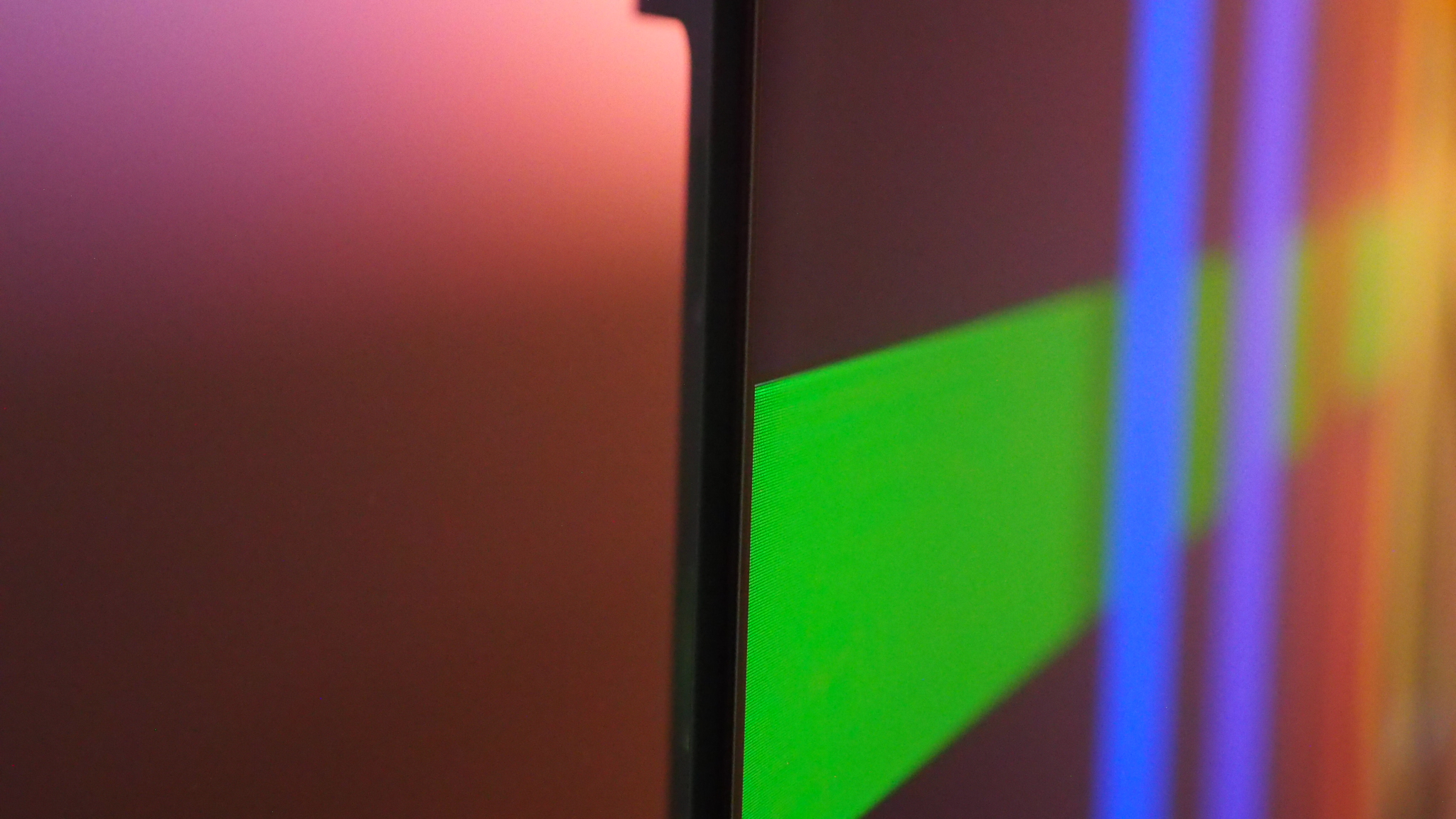
That's always the thing about OLED: the ability to deliver those OLED-tastic deep and detailed blacks. The OLED 937 does this wonderfully, of course, as is the nature of self-emissive pixels in this panel technology ensuring no blooming, haloing or bleaching of surrounding areas of a picture. But in addition to true black, this Philips knows all manner of other black tones too; it's got a rich and deep palette at the darker end of the scale, which makes for cinematic perfection – especially if you're feeding it a superb source, such as a 4K Blu-ray (I've been watching Ghostbusters: Afterlife, don't judge me, I still love it).
The rest of the colour palette is equally as well judged as the blacks, with a nice balance stuck between vivid and natural. The Philips is alert to even the most subtle variation in shade or tone, and the result is a confident, convincing picture that never looks overdriven or artificial.
Switch to a current-gen games console, such as the PlayStation 5, and things continue to look superb thanks to the HDMI 2.1 input. The input lag isn't class-leading, though, at around 21ms, but I find that perfectly acceptable. Besides, the light and shade of picture quality in The Last of Us Part II (I couldn't resist playing again, following the arrival of HBO's The Last of Us TV show) make clear this TV can indeed handle gaming superbly. It's more aimed at cinema-lovers overall, but it's a dab hand at all manner of content.
I can't not mention Ambilight here, too, as I find this feature a great addition. It might read like a gimmick, but honestly once you've had it running in tandem with live pictures it feels natural. In my setup I did have to turn off the lower row of lighting, as it was distracting for shadowing, but that Philips permits such detailed editing is an example of how detailed you can go with this TV. If you find Amblight too bright, too fast or slow, all of that can be tweaked to your preference to make already sublime-looking pictures carry themselves with even more confidence.
Philips OLED 937 review: Sound Quality
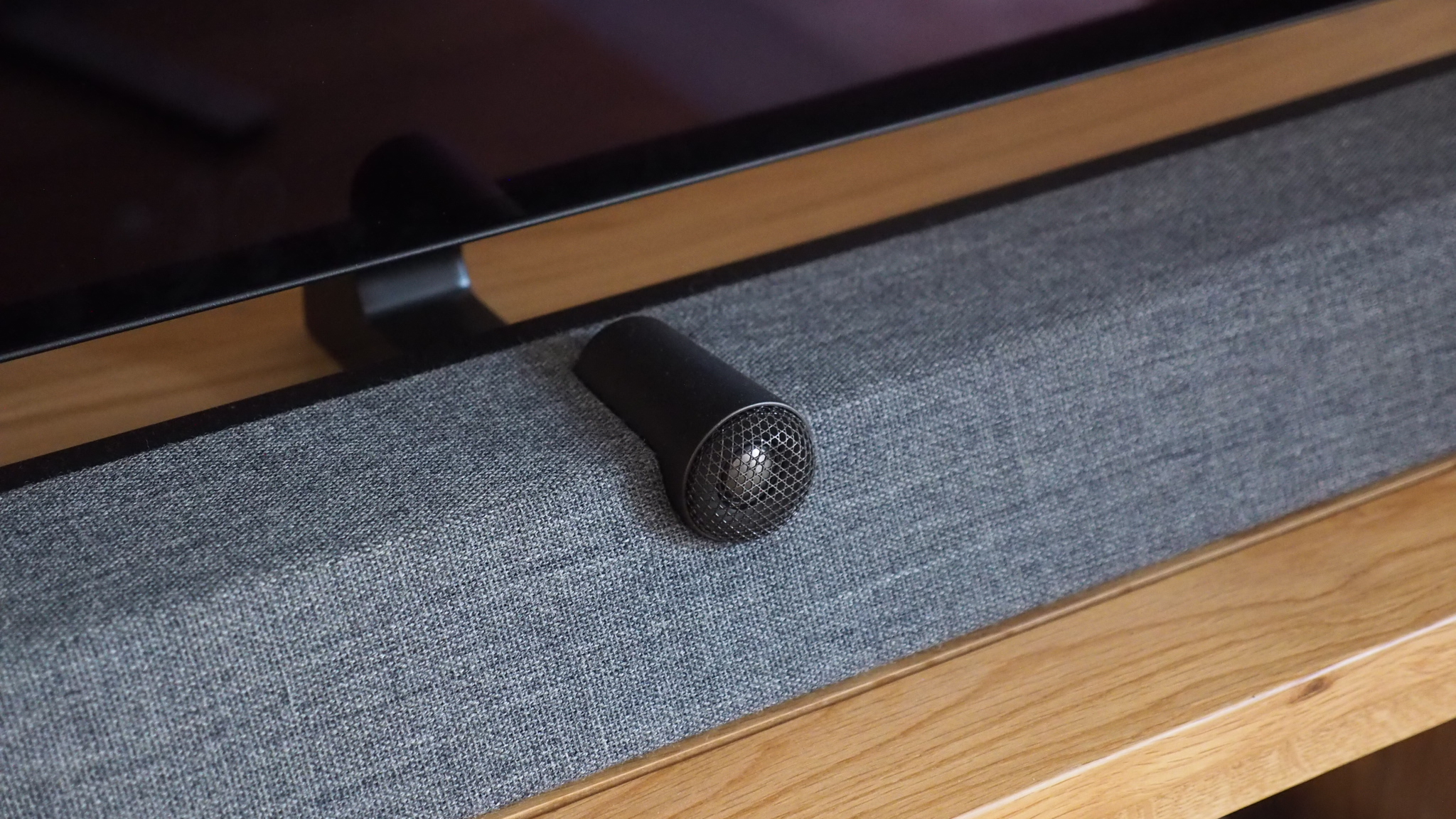
Many companies treat the sound their TVs make as something of an afterthought, but that’s not how Philips rolls. Its partnership with Bowers & Wilkins is properly established now, and keeps growing and developing to deliver better results with each iteration through which the two companies collaboratively create.
As I've said before, the Philips OLED 937 is the best-sounding TV I've ever heard straight out of the box. And that's saying something: I've lived with the Panasonic LZ2000 for many months prior to this review, which does also have a super soundsystem integrated, but can get sometimes confused with its 'positioning'. The Philips just sounds a lot more natural to me.
The Philips OLED 937 also sounds sufficiently bassy, which I didn't necessarily think would carry from a system that's crammed all its main audio goodies into a soundbar-like structure connected to the TV. But it really does: there's ample thump from lower-end frequencies, not to subwoofer kinds of levels, but to add additional separates to a TV such as this would partly undo its all-in-one nature – and one of the reasons to want to buy it in the first place.
The Bowers & Wilkins system here is compatible with object-based decoding, so Dolby Atmos gets the full treatment, delivered through that 5.1.2 channel system. That means it has upward-firing and side-firing speakers to add a greater sense of depth. It works nicely, giving accurate positioning and a broad soundstage that I really appreciate. No, it's not going to match one of the best soundbar setups with full separates included, and you won't feel like you're surrounded by sound, per se, but it's still a great system straight out of the box – and I'm sure you'll agree.
Philips OLED 937 review: Design & Usability
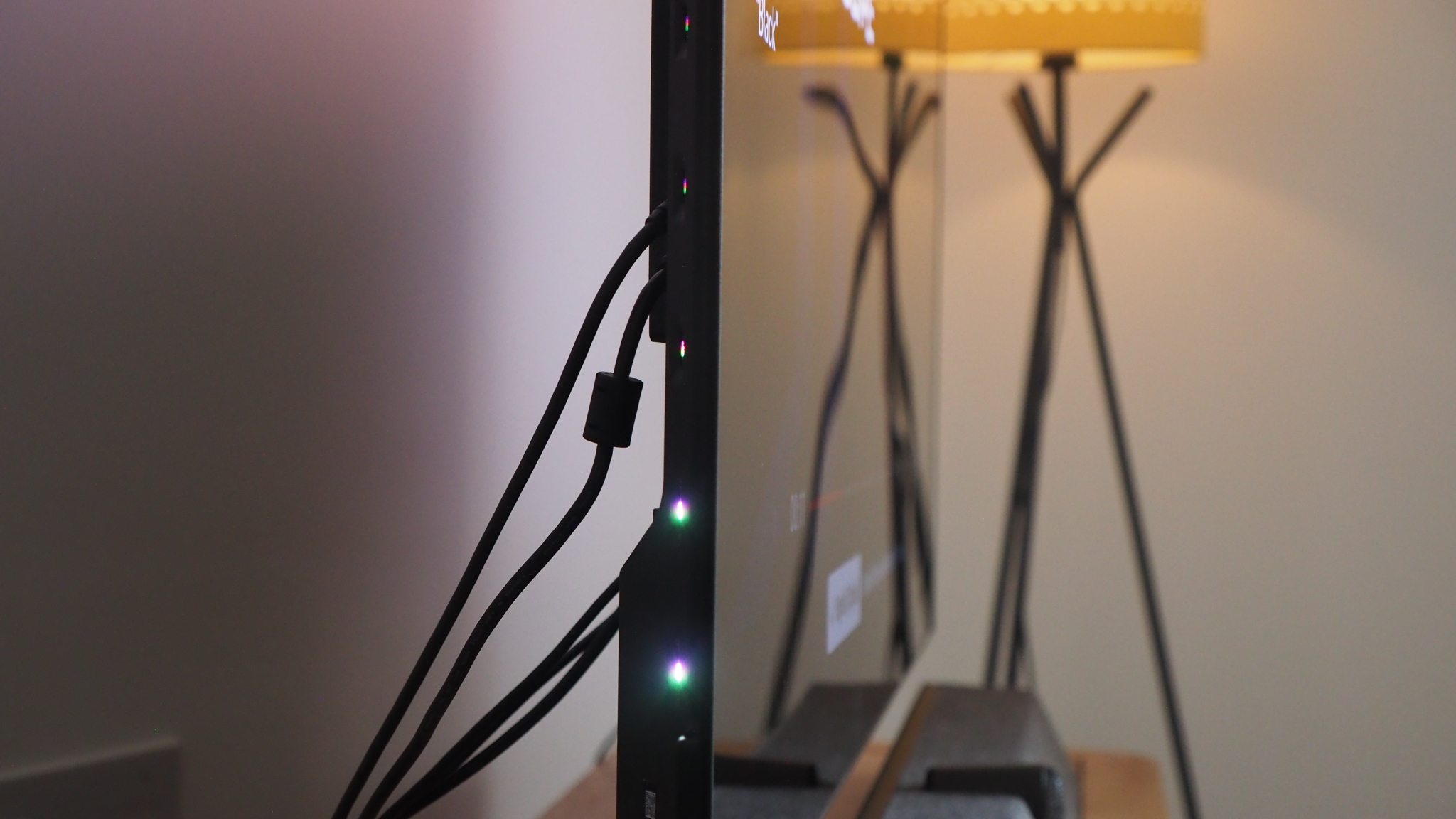
Unlike the Panasonic LZ2000 I mentioned earlier, the Philips OLED 937 is much slimmer (47.3mm if you like full detail) and if you don't want to pop it onto a TV stand or suitable AV cabinet (where it totals 268mm) then it can also be wall-mounted to take full advantage of that slenderness. There's the relevant kit in the box to ensure the soundsystem can be successfully mounted in that format, plus onboard menus will let the TV know whether it's against a wall directly or not in order to automatically adjust the sound profile accordingly.
As you can see from my pictures I've gone all-in with a TV cabinet mount, and what I really like about the OLED 937's aesthetic is how the soundsystem pretty much becomes the stand. It's all very seamless in its visuals, and I was surprised at how this thing balances so well given the minimal number of pieces and screws you'll need to use.
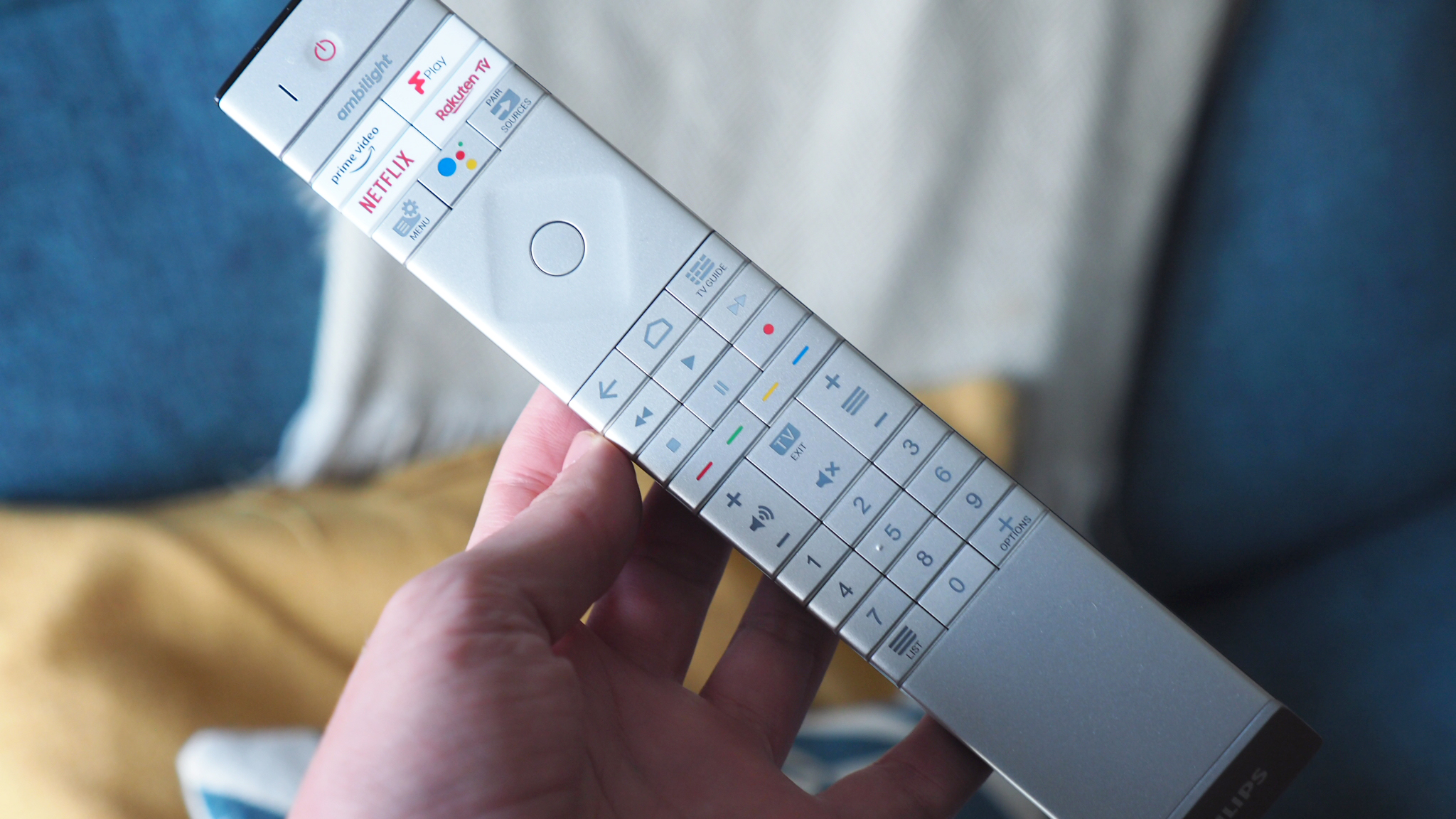
The included Philips remote to control the OLED 937 is a rather large silver number, but at least its not a fiddly touchpad-type control like some competitiors use. You'll need this to access the various set-up menus, which are notably extensive, in-depth and not especially friendly - as I said before, you’ll find an absolute stack of adjustability. It's worth the investment time, though, as you'll get a great looking picture as a result.
Voice-control is available, too, should built-in Google Assistant please you. I prefer to be old fashioned and click the actual buttons. And if neither those routes are your favourite then the Philips also works with Alexa – so if you own a compatible speaker or product on a common network then you can shout your orders in this way.
In terms of operating system, it's Android TV 11. It's fine, it'll do, it's not the best interface available in the TV market, but nor am I too worried as someone who lives in BT TV, Netflix, Amazon Prime and BBC iPlayer. Fortunately Android TV is all set up for accessing such sources, including other big-hitters such as Apple TV, Disney+, Freeview Play, All4, and more.
Philips 65OLED937 review: Verdict
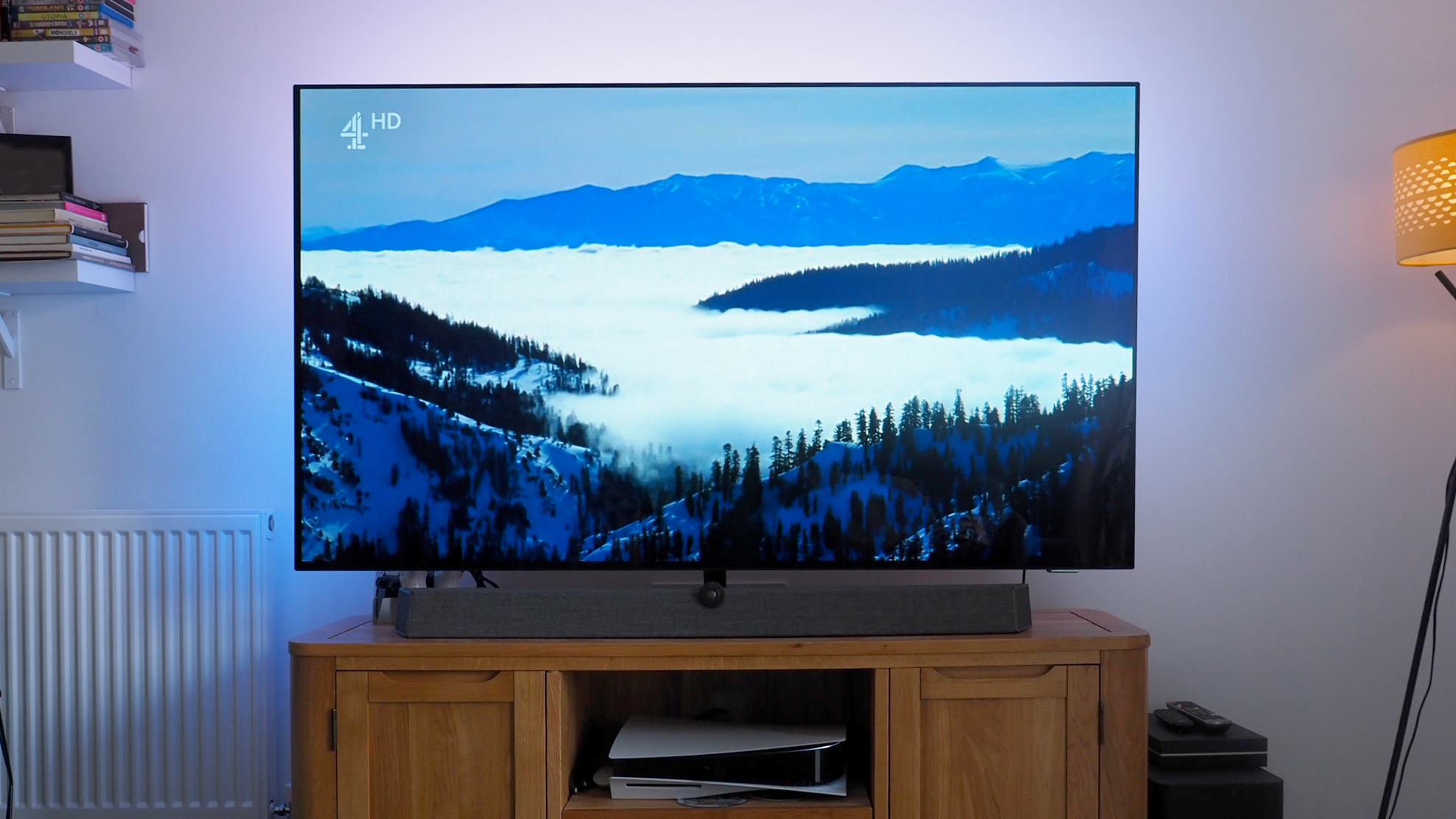
If you're looking for a large-screen OLED TV that sounds as astonishing as it looks, without the need to invest in an additional soundsystem, then the Philips OLED 937 is simply untouchable. Its pictures look sublime, while its Bowers & Wilkins sound is the best I've ever heard integrated into a TV to date.
Sure, it's expensive, there are only two large panel sizes available (65- and 77-inch) and if you're not in it for Ambilight then you might be tempted to slink off elsewhere and buy a more affordable alternative. But let me tell you: don't shrug off Ambilight, as this additional real-time coloured backlight is an additional visual treat that only heightens immersion.
Those seeking a no-compromises all-in-one OLED TV that's a sound and vision extravaganza need look no further than the Philips OLED 937.
Also consider
If your aim is to buy a large OLED TV with integrated soundsystem then Panasonic's LZ2000 offers a more comprehensive Dolby Atmos surround setup out of the box. It lacks the Ambilight of Philips, but of course, but it is also a little cheaper – and with the MZ2000 coming out in 2023 that'll likely only drive down the LZ model's price even further.
Not fussed about a fancy soundsystem integration at all and want to work with your own separates setup or just the TV as is? It's hard to beat LG's C2 OLED, available in a wide range of sizes, and for a lot less money too. There's no Amblight and no mega-soundsystem, but you'll bank a lot of change compared to the Philips and Panasonic options if this is your preference.
Sign up to the T3 newsletter for smarter living straight to your inbox
Get all the latest news, reviews, deals and buying guides on gorgeous tech, home and active products from the T3 experts

Mike is T3's Tech Editor. He's been writing about consumer technology for 15 years and his beat covers phones – of which he's seen hundreds of handsets over the years – laptops, gaming, TV & audio, and more. There's little consumer tech he's not had a hand at trying, and with extensive commissioning and editing experience, he knows the industry inside out. As the former Reviews Editor at Pocket-lint for 10 years where he furthered his knowledge and expertise, whilst writing about literally thousands of products, he's also provided work for publications such as Wired, The Guardian, Metro, and more.
-
 Leaked AirPods prototype looks like Nothing... literally
Leaked AirPods prototype looks like Nothing... literallyAnd we are here for them
By Britta O'Boyle Published
-
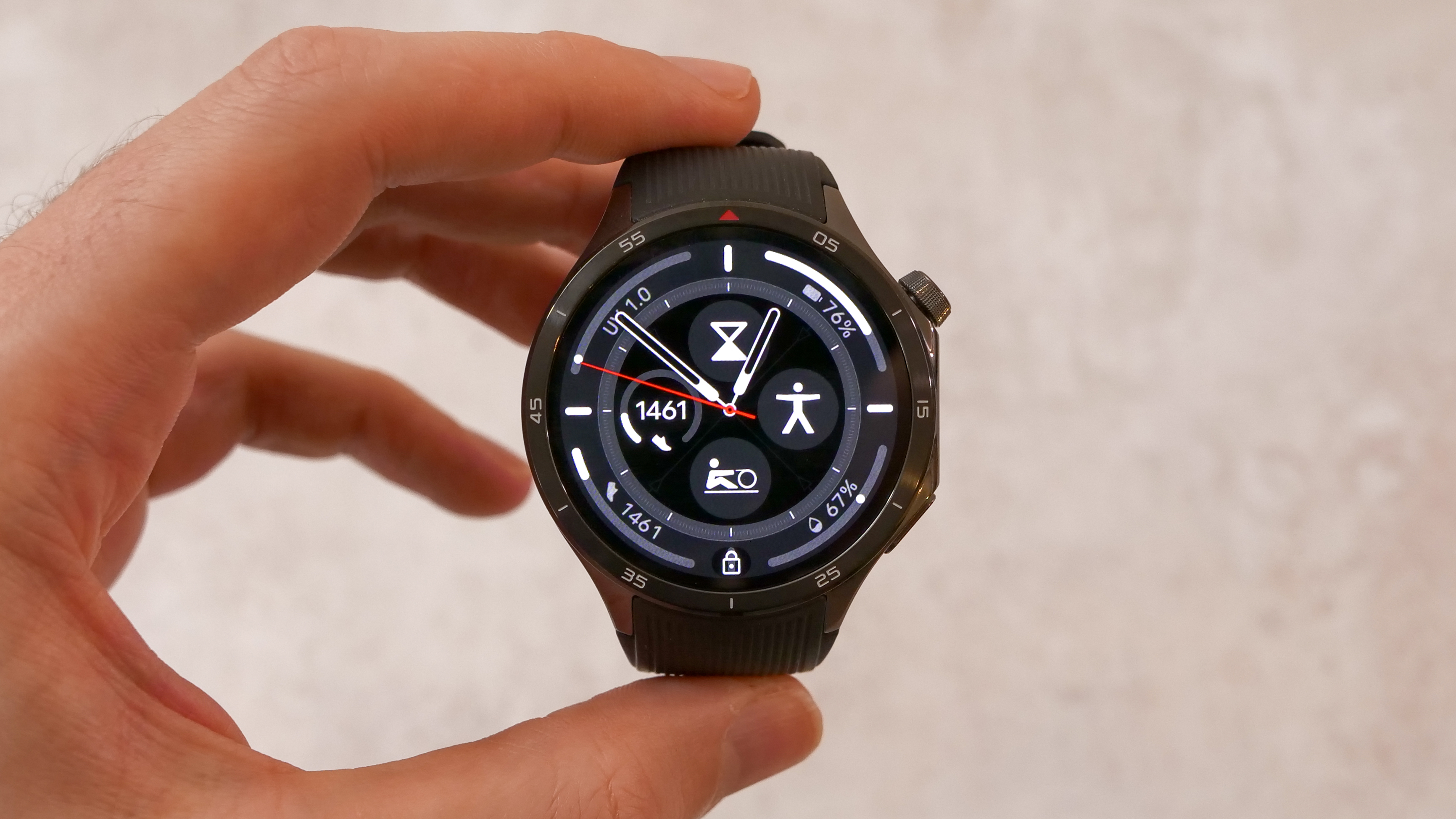 OnePlus Watch 3 lands in the UK with a flurry of freebies and a huge discount
OnePlus Watch 3 lands in the UK with a flurry of freebies and a huge discountThe new titanium-clad smartwatch brings 120-hour battery life, ECG health checks, and some serious launch offers
By Matt Kollat Published
-
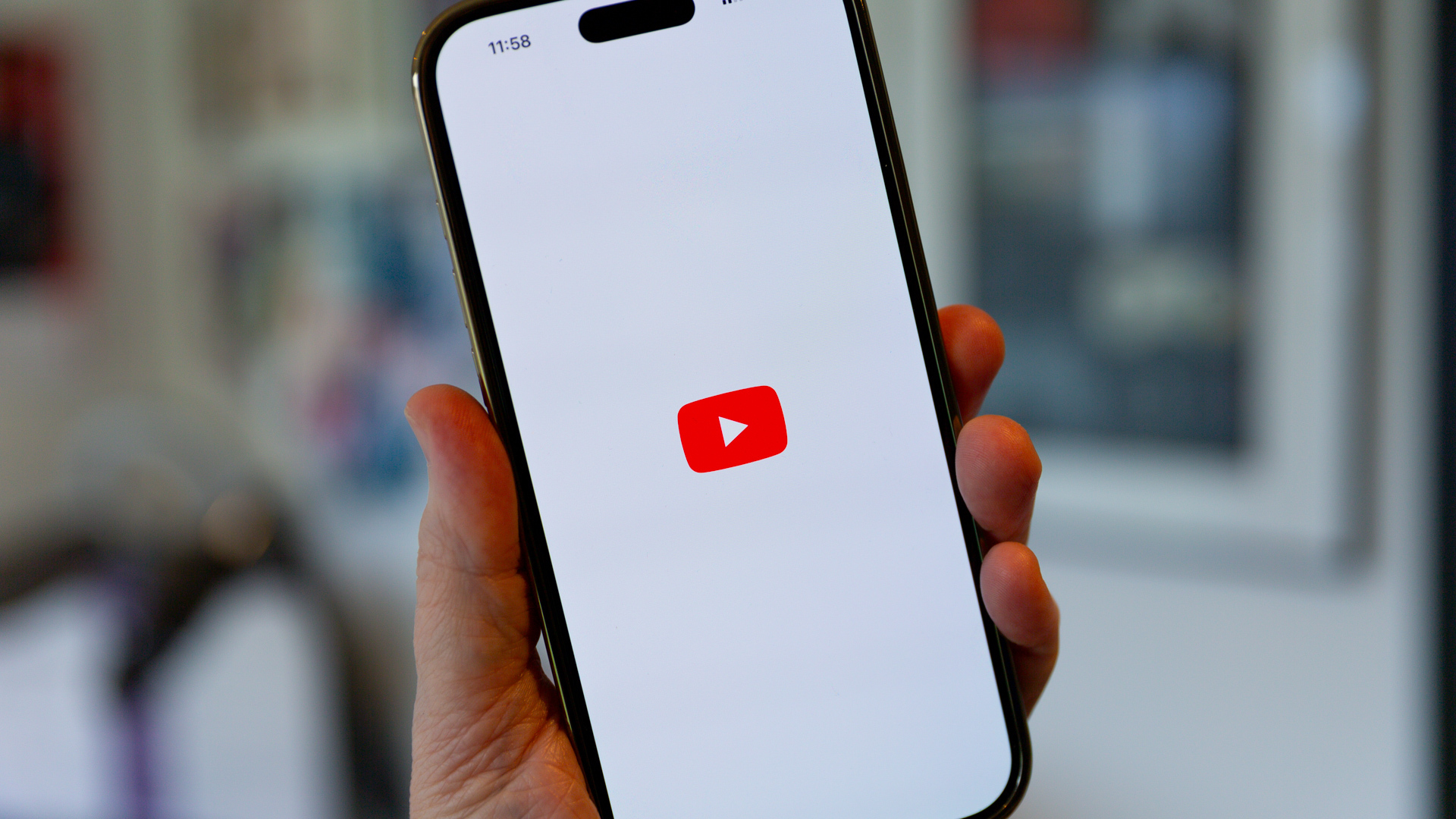 Future YouTube feature could put an end to your doomscrolling
Future YouTube feature could put an end to your doomscrollingAnd that's something we would love to see
By Britta O'Boyle Published